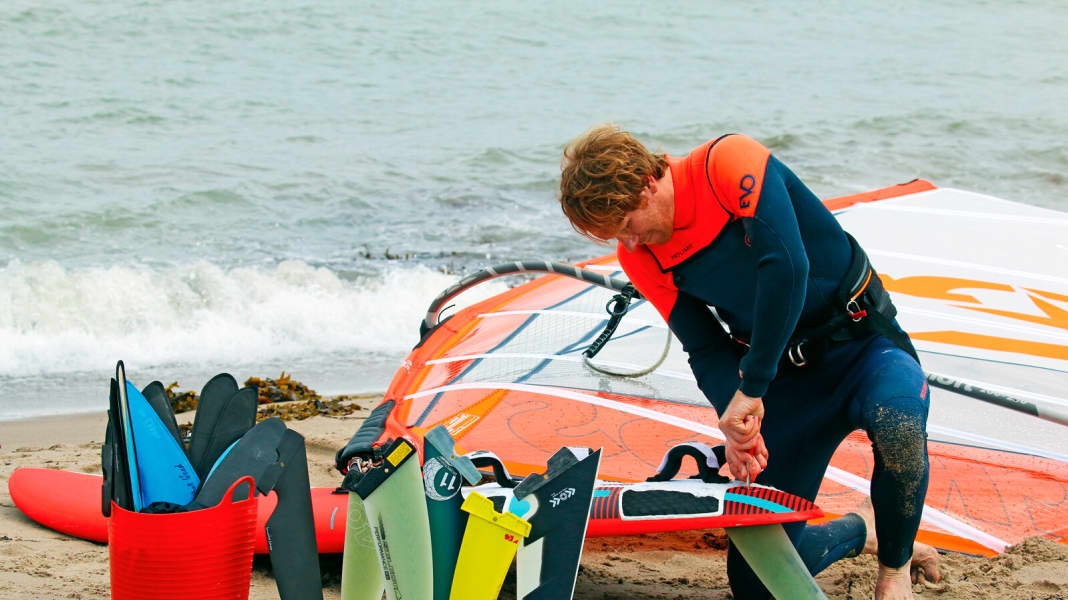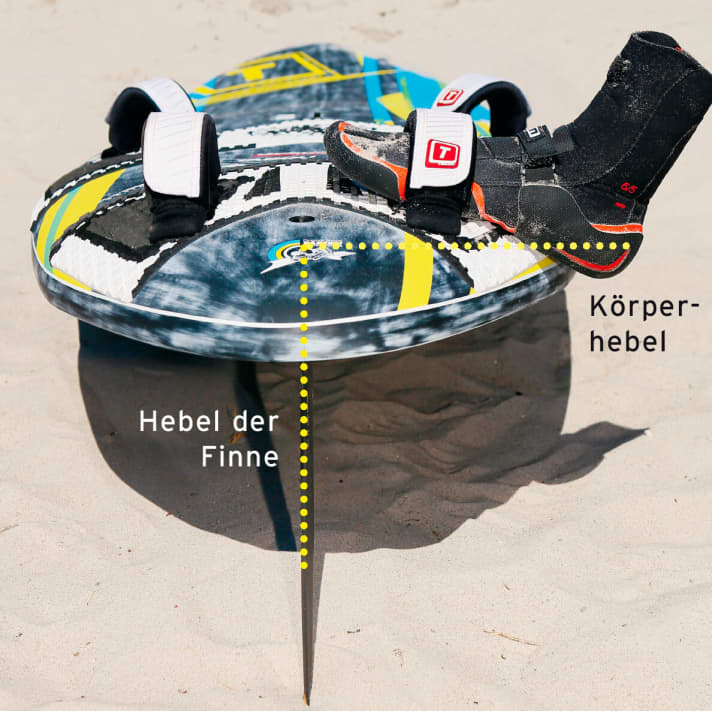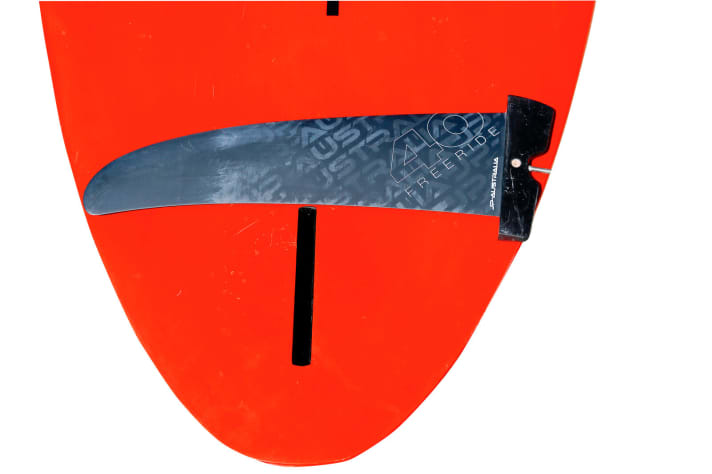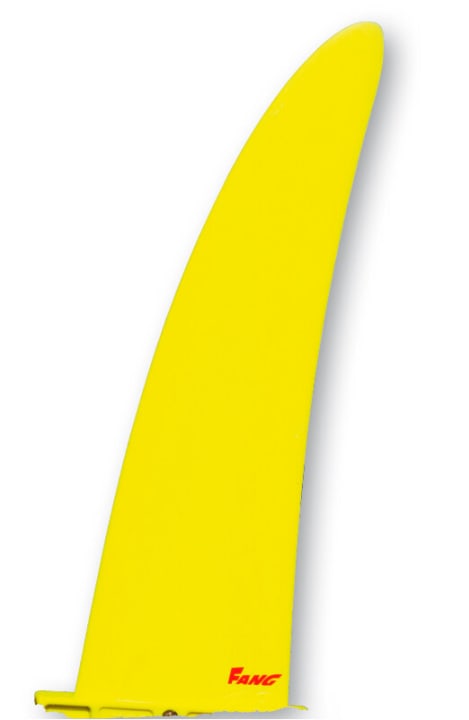
Compared to the hodgepodge of fin set-ups and box systems that you have to deal with in the wave segment, things are almost simple in the freeride segment: one fin, one powerbox screw, done! However, together with surfers from other disciplines, a second fin is the most favourable way for freeriders to adapt their board to the conditions or their riding ability. We worked out on the Baltic Sea what a shorter or longer fin does to the board and which gradation makes sense.
Fin basics
To understand why a second fin on freeride boards brings advantages, it helps to take a look at the physics of the board: the fin is, in a way, the chassis of the board, as it provides the necessary lift for planing and speeding. Generally speaking, in addition to the quality and profile of the fin, the length and surface area of the fin are decisive for its performance. The greater the draught, the more lift (= gliding performance) is generated. The length of fin that manufacturers choose for their boards depends only to a limited extent on the volume of the board, but primarily on the width of the board, especially in the tail area. An example: A bump & jump board such as the Fanatic FreeWave comes out of the box in size 116 litres with a 30 mm centre fin, but a freerider such as the Gecko 112 comes with a 38 mm fin - precisely because it is significantly wider, especially in the tail area. This also explains why the extremely wide tails of slalom boards have to be fitted with even longer fins.
The wider the tail of a board is, the further out you naturally stand, at least if you use your board in a four-strap set-up. This "body lever" must be countered by a corresponding lever on the fin (Fig. 1).

Manufacturers therefore equip their boards with a standard fin in which the fin length and tail width are in a certain ratio - the fin length usually corresponds approximately to the width of the board in front of the fin box (Fig. 2). Equipped in this way, the board glides freely over the water in normal wind conditions.

At the limit, i.e. in absolute planing conditions or in strong winds, this balance is thrown out of kilter - time for a second fin.
Which alternative size makes sense for fins?
A graduation of three to five centimetres up or down from the standard fin has proven to be useful in practice for most freeride boards.
The use of longer fins is particularly useful if you regularly have to deal with gliding conditions at the absolute lower limit at your home spot. A three to five centimetre longer fin improves: - planing and planing through wind holes - suitability for large sails (approx. +0.3 to 0.5 square metres) - suitability for heavy riders (from 95 kilos)
Conversely, a fin that is three to five centimetres smaller than the standard fin is advantageous if you often want to use your freeride board in really strong winds. In concrete terms, this improves:
- Control in strong winds, due to a reduced tendency for the board to rise uncontrollably ("wheelie")
- Suitable for small sails (approx. -0.3 to 0.5 square metres)
- Suitable for very light riders (up to 65 kilos)
However, deviating from the standard fin by more than five centimetres hardly brings any advantages in practice. For example, if you equip your freerider with a 32 mm track holder instead of the standard 40 mm fin, the board will only surf through the water on the windward edge because the corresponding lever of the fin is missing. This results in less planing power, speed and ultimately even poorer control. Conversely, a 50 mm fin quickly causes the board to rise uncontrollably with the first gust ("wheelie") because the lift of the fin can no longer be tamed.
Despite the clear advantages of a second fin - you can save an entire sail size in some circumstances - many windsurfers shy away from buying one at the shop counter at the latest. 100 to 160 euros seems steep at first. That's why we looked around to see if there are any cheaper alternatives - and found what we were looking for.
Plastic fantastic
K4 Fins offers a real alternative to the established suppliers. The yellow track holders are made from plastic in the UK and have also been available for freeride boards since the launch of the "Fang" model.

Our test showed that the fin is not at all soft or spongy, even with a length of 40 centimetres and when 90-kilo pilots stand on deck with the 7.5 mm fin, thanks to the now very hard plastic compound. The "Fang" fits perfectly into the box, from planing to perceived top speed and spin-out safety, you don't have to accept any compromises compared to a GRP series fin - even though the K4 is quite affordable with a price of just under 69 euros. It's just a shame that K4 doesn't yet offer seagrass fins.

